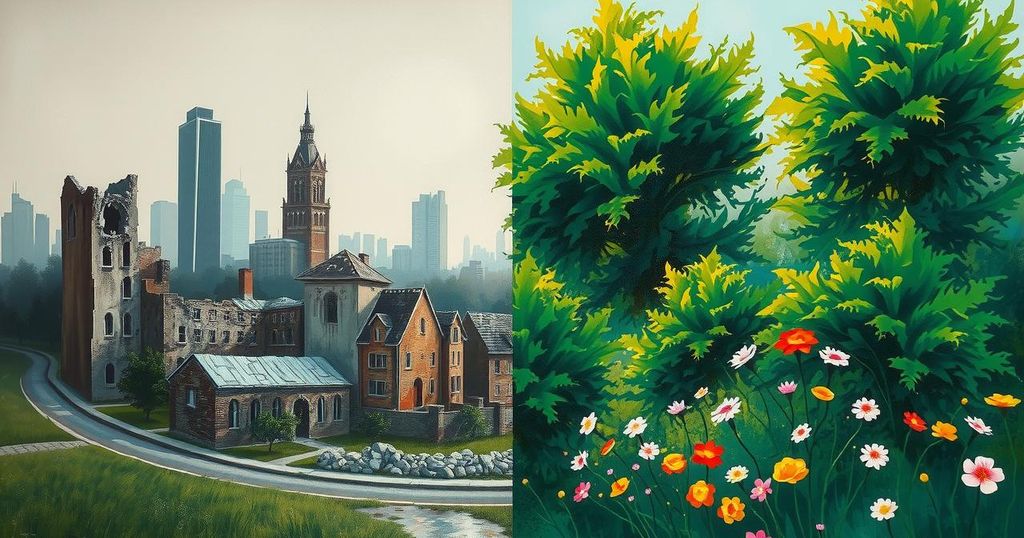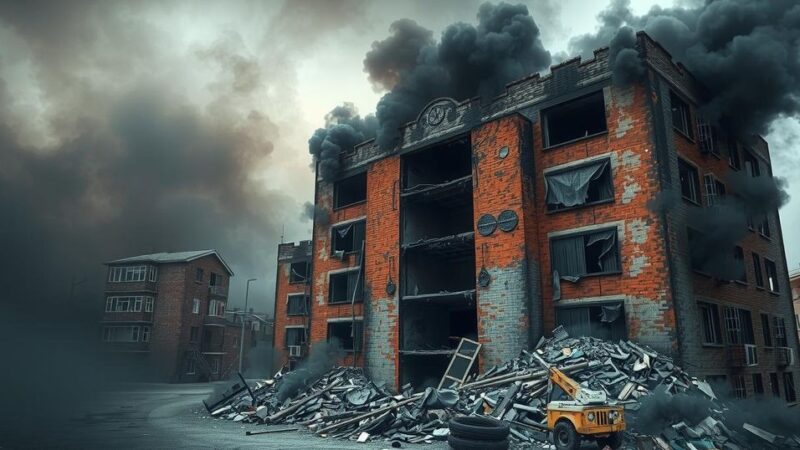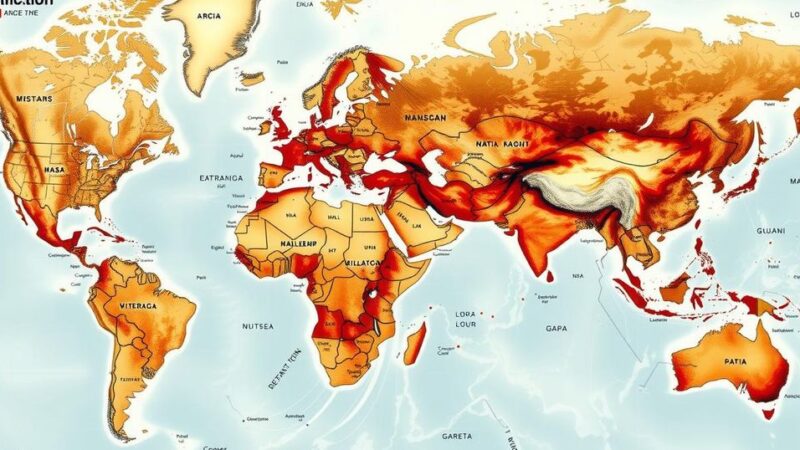The Sayida Zaynab shrine represents a shift from a site of pilgrimage to a fortified position under new Sunni leadership following Syria’s civil war. Abu Omar’s security team aims to protect the Shia community, while tensions with the old regime’s supporters persist. In Douma, returning residents face distrust even as they seek stability. The article underscores ongoing sectarian divisions and a challenging path to societal harmony in post-Assad Syria.
The Sayida Zaynab shrine, located in the outskirts of Damascus, has transitioned from a historic pilgrimage site to a stronghold for Shia militias supporting the Assad regime during the civil war. Now under the management of Abu Omar, a former fighter and current head of security, the shrine symbolizes both hope and fear as it seeks to rebuild in a divided Syria. Most notably, the average daily visitors have plummeted from 5,000 to fewer than one hundred, reflecting changing dynamics in local power.
Abu Omar, alongside his Sunni gunmen, expresses a commitment to safeguarding both the shrine and the local Shia population from remnants of the former regime. He emphasizes, “Remnants of the regime are everywhere. We are hunting them every day. We must not relax.” This sentiment is mirrored by his deputy, Abu Mariam, who insists that their duty extends beyond sectarian lines, stating that they are building a state and pursuing justice rather than revenge.
Despite these aspirations, a residual fear pervades among those connected to the deposed regime. Deeb Krayem, a Shia manager at the shrine, reveals anxious sentiments about potential hostility from those who now govern Syria, highlighting a lingering distrust in the shift of power. He describes his own experience of being targeted and living in constant trepidation of face-to-face interactions with former adversaries.
The situation is further complicated in Douma, a former anti-Assad bastion, now slowly rebuilding under the new regime. The demographic shift has led to distrust between returning citizens and those who remained during the regime’s control. Abu Hashem Abdelrahman Taha, a local commander, leads efforts to stabilize the region, but he acknowledges the significant burdens they face, including lack of salaries for soldiers and unresolved property claims for returnees. He firmly states that the previous sectarian divisions in the army will not persist under the new government.
Life in Douma presents challenges as families return to a city still grappling with infrastructural damage and poverty. Many residents are struggling to adapt as amenities and housing are scarce. However, firsthand experiences from locals like Imad Abdulrazak Khabie reveal a reluctant yet hopeful return to their roots, contrasted by the despondency felt by others who had supported the revolution but remained behind.
Diverging perceptions create friction, as community members question each other’s loyalty based on their past choices during the regime. Concerns are mounting over how individuals who have endured years of civil war can coexist in a harmonized society. The recent uptick in sectarian violence against Alawites serves as a stark reminder of the volatility embedded in the region, yet many still cling to the notion that the end of the Assad regime signifies a critical turning point for Syria and the onset of potential reconciliation.
The situation in Syria remains precarious, reflecting deep-seated sectarian divides and lingering fears as communities navigate the aftermath of a brutal civil war. The transformation of the Sayida Zaynab shrine underlines the complexities of these changes, while tensions in Douma symbolize broader societal struggles. Residents exhibit both hope for a new beginning and caution regarding old animosities. The overarching desire for a unified Syrian state continues to contend with historical grievances, illustrating a long and challenging journey ahead for reconciliation and stability in the region.
Original Source: tcf.org






